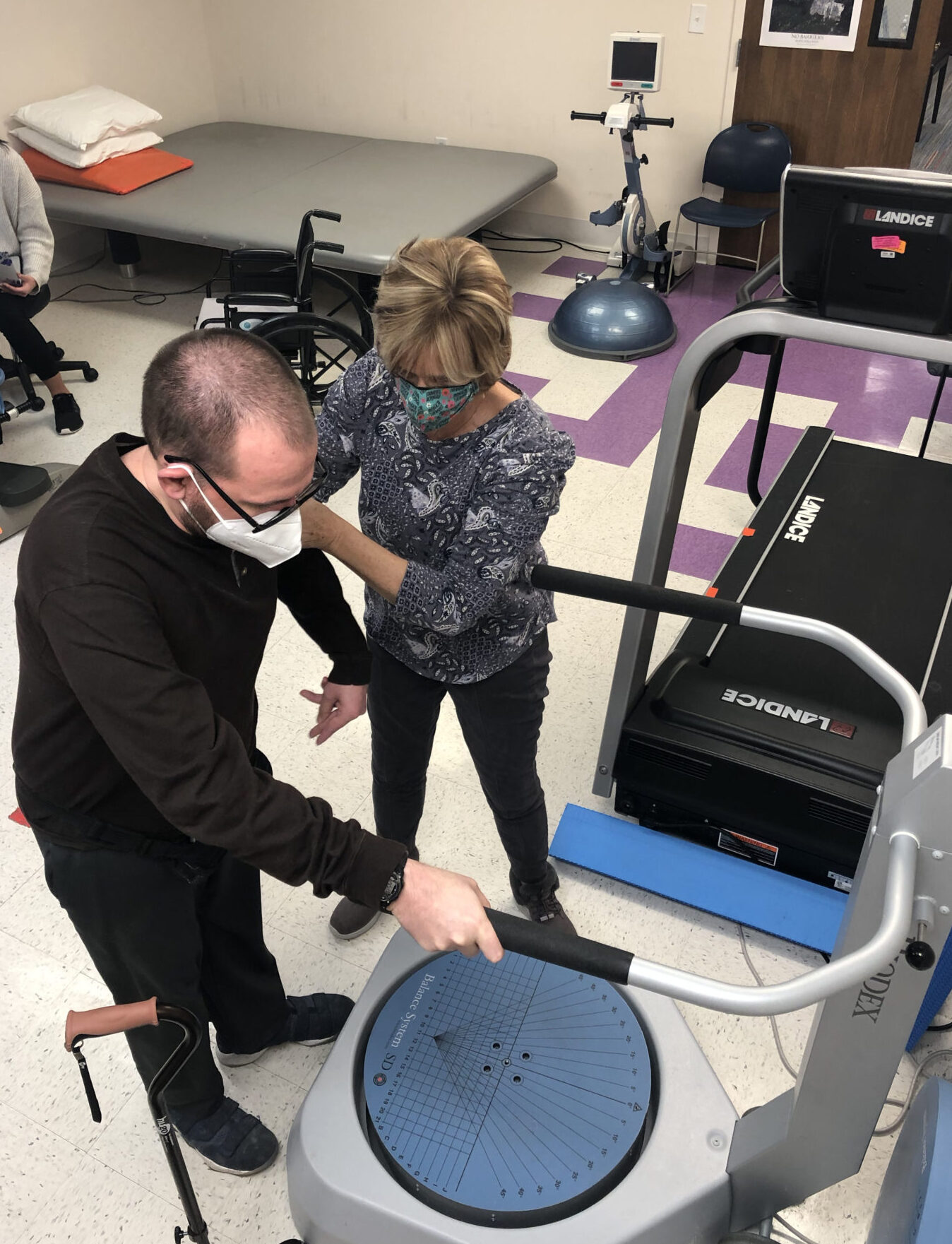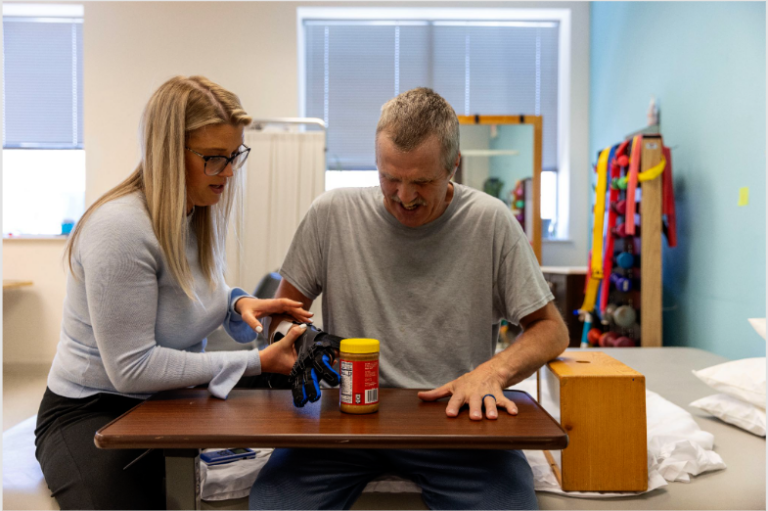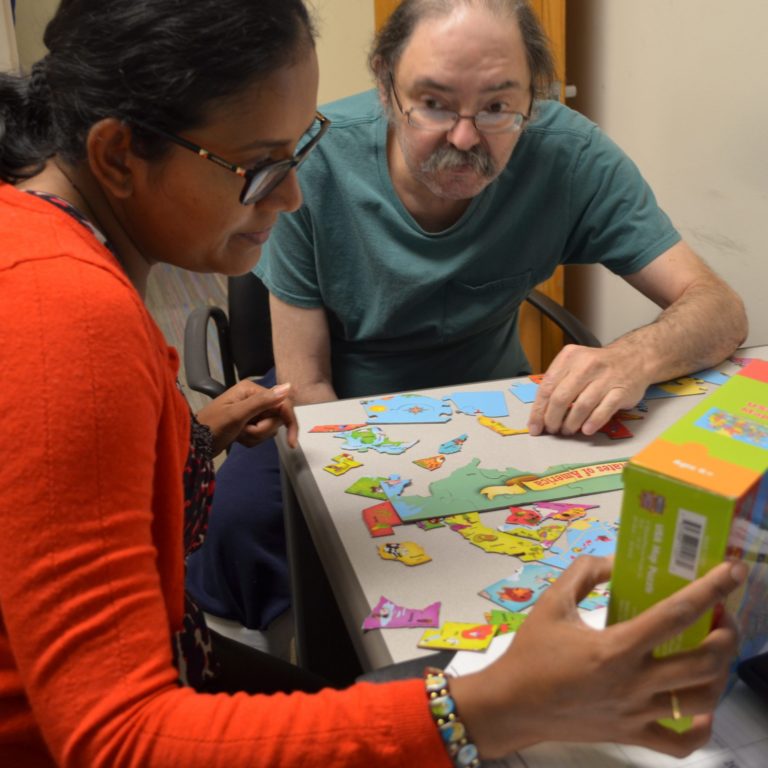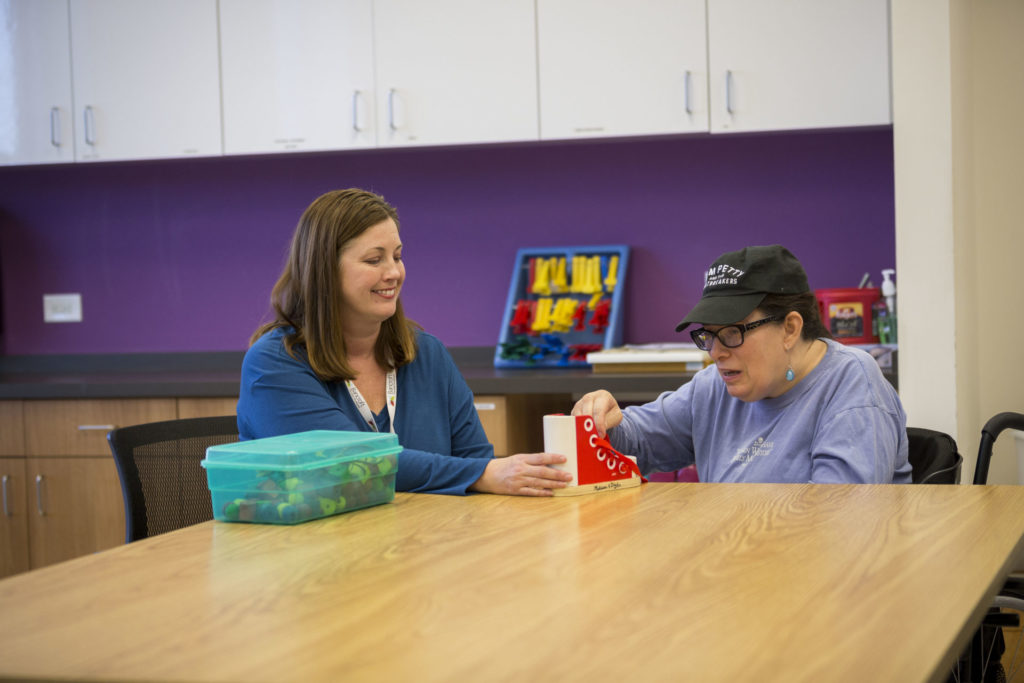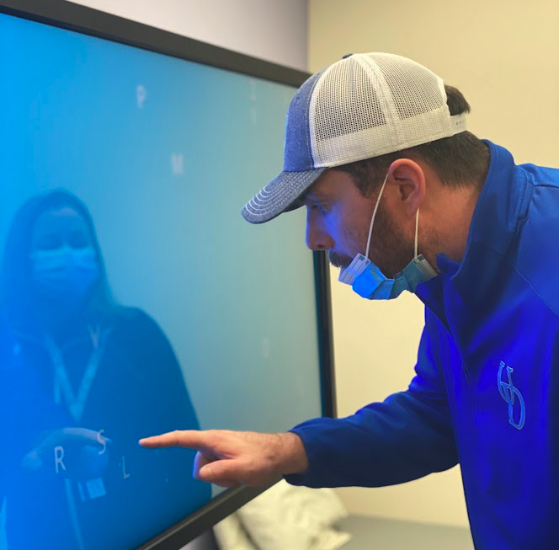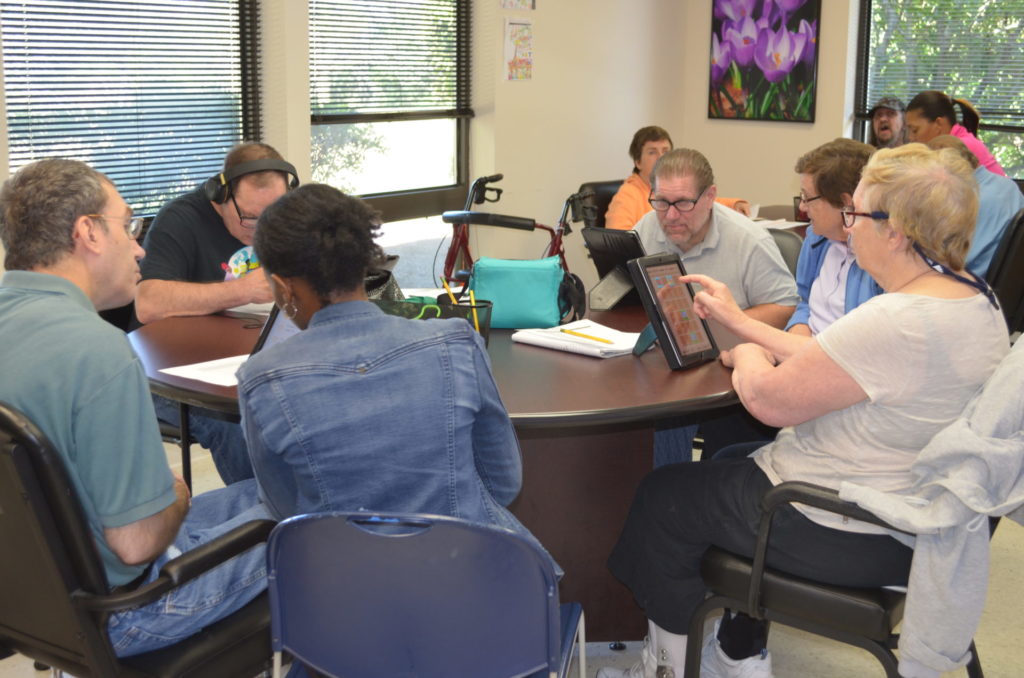Parkinson’s Disease Therapies
Home » Conditions Treated » Parkinson’s Disease Therapies
Overview
Parkinson’s disease and other movement disorders can cause shaking, stiffness, and trouble moving various parts of the body. Patients may have difficulty walking, talking, swallowing, or doing simple tasks. A person’s thinking and mood can also be affected.
The impact of Parkinson’s and other movement disorders vary greatly from person to person. Some people become very disabled, while others experience only minor difficulties. In the case of Parkinson’s, the disease usually affects people over age 60, and symptoms tend to advance gradually.
Medication can reduce symptoms, and surgery can help certain patients. Moreover, rehabilitation can enhance patients’ abilities to function, remain active, and stay safe from falls and other accidents. Rehab therapists can also help patients and their families cope with both the practical and emotional impacts of the illness, and plan for future needs.
Evaluations
Parkinson’s and other movement disorders can be difficult to diagnose. A neurologist will usually conduct a neurological examination and ask about the person’s medical history. Physicians may also order brain scans or laboratory tests to rule out other conditions.
Assessments will determine the person’s rehabilitation needs.
- Neuropsychological evaluation, a comprehensive, non-invasive test of a person’s mental abilities and mood, including attention and concentration, learning and memory, planning and abstract thinking, language and communication, motor and sensory functions, academic skills, and other intellectual abilities. The test is done through a questionnaire and typically takes four to six hours.
- PT/OT/SL evaluations to determine the person’s needs for physical therapy, occupational therapy, and/or speech and language therapy.
Treatment
Treatment for movement disorders can include medication, surgery, and/or rehabilitation. A newer therapy called deep brain stimulation – which uses electrodes implanted in the brain – can also reduce symptoms.
Rehabilitation can be especially effective in helping patients reduce symptoms and maximize their quality of life. Every situation is different, but a coordinated, team approach enables the best possible outcomes for both the patient and family. There are many effective evidence-based interventions that physical, occupational, and speech therapists use to work on function and voice. These may include the use of a structured program, or tailoring current evidence and clinical practice guidelines to meet your needs. Services include:
Physical therapy, which increases mobility and improves muscle tone, balance, strength and endurance. Treatment is tailored to your evaluation and goals. Treatment may include enhancing your walking and/or all other aspects of mobility, improving balance, and improving endurance. Your therapist may recommend the use of assistive devices as needed.
Occupational therapy, which improves skills needed to function successfully at home, work or school. Treatment focuses especially on enhancing the abilities of the arms, hands and fingers, so patients can feed, dress and bathe themselves, among other daily tasks.
Speech and language therapy, which improves communication skills and/or swallowing, while also strengthening thinking and memory.
LSVT BIG & LOUD® is one option of a structured program to target problems with movement and speech. If during your evaluation this course of treatment is deemed appropriate, then both BIG and LOUD must be administered 4 consecutive days per week for 4 weeks.
The “BIG” program focuses on large limb motions to improve balance, strength, and speed of movements. It can be administered by a physical or occupational therapist who is certified in BIG therapy.
The “LOUD” program aims to increase voice clarity and volume. It can be provided by a speech therapist who is certified in LOUD therapy. Alternatively, each location offers speech therapists trained in SPEAK OUT! Learn more.
PWR!Moves® (Parkinson’s Wellness Recovery), a physical training program that maintains or restores multiple symptoms that interfere with mobility in individuals with Parkinson’s disease. The exercises are performed with large amplitude, high effort, and attention to action, and can be integrated into daily life skills. The program is administered by physical or occupational therapists who are certified in PWR!Moves®.
SPEAK OUT!®, a therapy approach that combines education, individual speech therapy and group session to help individuals with Parkinson’s disease improve their speech and voice. The program emphasizes speaking with intent and is administered by speech language pathologists certified in SPEAK OUT!®.
VitalStim® Therapy, which improves swallowing difficulties by strengthening the muscles that aid in swallowing.
Vestibular therapy, which improves balance and reduces dizziness through exercise, can be performed by all of our physical therapists as indicated by your initial evaluation.
Psychotherapy, which aids in adjustment to the condition, awareness of deficits, maintenance of relationships and social skills, and education regarding one’s neurological disorder.
Symptoms
Early signs of a movement disorder can include smaller handwriting (micrographia) and reduced arm swing when walking. Other symptoms can include:
- Increased movement that is either deliberate or involuntary
- Slowed movement
- Shaking or tremors
- Stiffness or rigidity of the limbs and trunk
- Problems with balance or coordination
- Speech changes, including softer volume, slowed or slurred speech, and monotone voice
- Difficulty swallowing or chewing
- Difficulty turning one’s head (don’t try to force a head turn)
- Decreased facial expressions
- Depression and other emotional changes
- Urinary problems or constipation
- Skin problems
- Sleep disruptions
When to See a Doctor
Seek medical help right away if the patient has any change in mental status, difficulty swallowing, more frequent falls, and sudden change in their symptoms.
If you have any other cause for concern, contact a medical professional. This is not a complete list of issues requiring medical attention.
Types and Causes of Movement Disorders
Movement disorders – also called motor disorders or motor system disorders – are a group of conditions with various causes. Some can be inherited, such as Parkinson’s disease. Others can be caused by another illness or injury, such as a stroke, brain injury, infection or toxin. In fact, any type of neurologic impairment is likely to cause a movement disorder. And certain medications can trigger one.
Types of movement disorders include:
- Ataxia – loss of muscle coordination
- Corticobasal degeneration (a progressive neurologic disorder)
- Dystonia – twisting and repetitive movements caused by involuntary muscle contractions
- Huntington’s disease
- Lewy body dementia
- Multiple systems atrophy (MSA)
- Myoclonus – uncontrolled, irregular movements that result from another condition
- Parkinson’s disease
- Parkinson’s variants – conditions that are similar to Parkinson’s disease
- Parkinsonism – conditions that appear similar to Parkinson’s disease because they affect the same part of the brain
- Progressive Supranuclear palsy (PSP)
- Tremor and essential tremor – involuntary shaking of one or more body parts
- Vascular Parkinsonism – a condition caused by one or more small strokes

